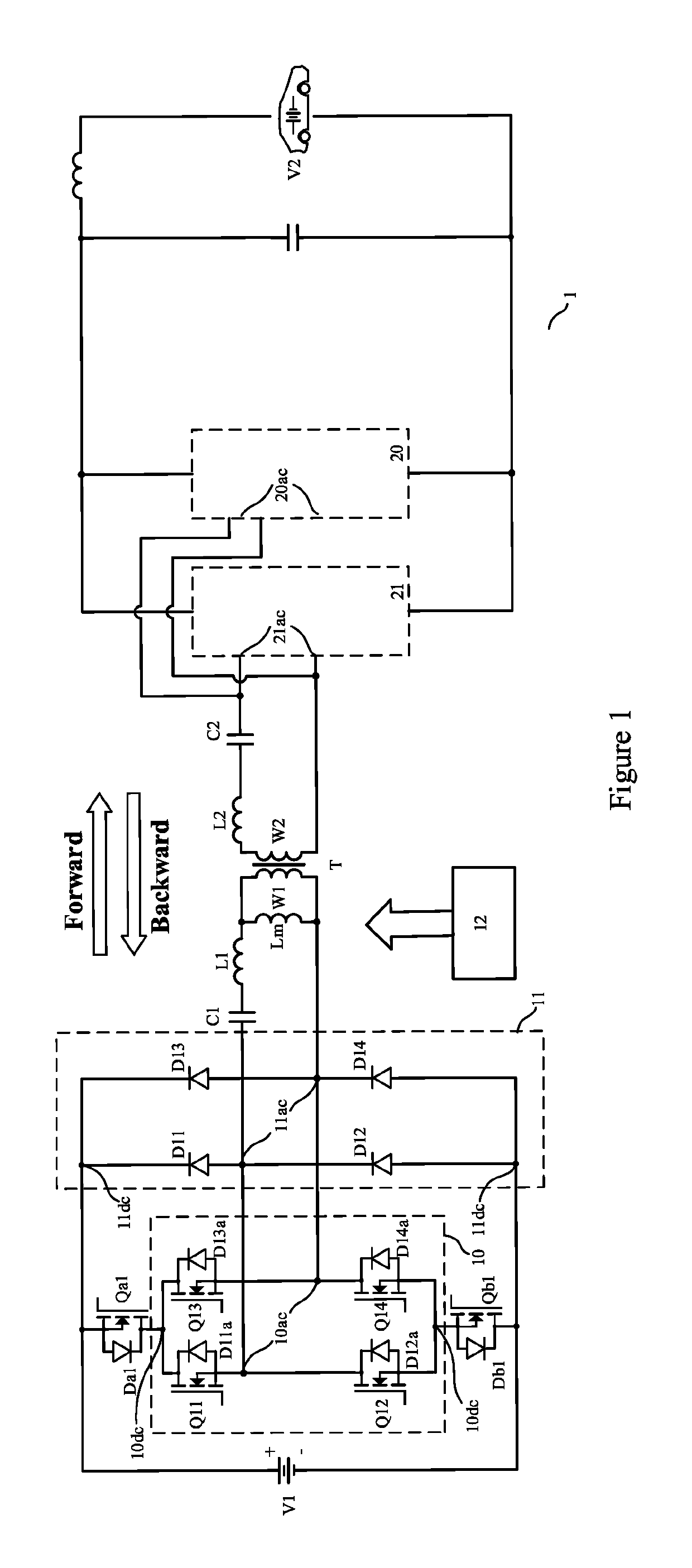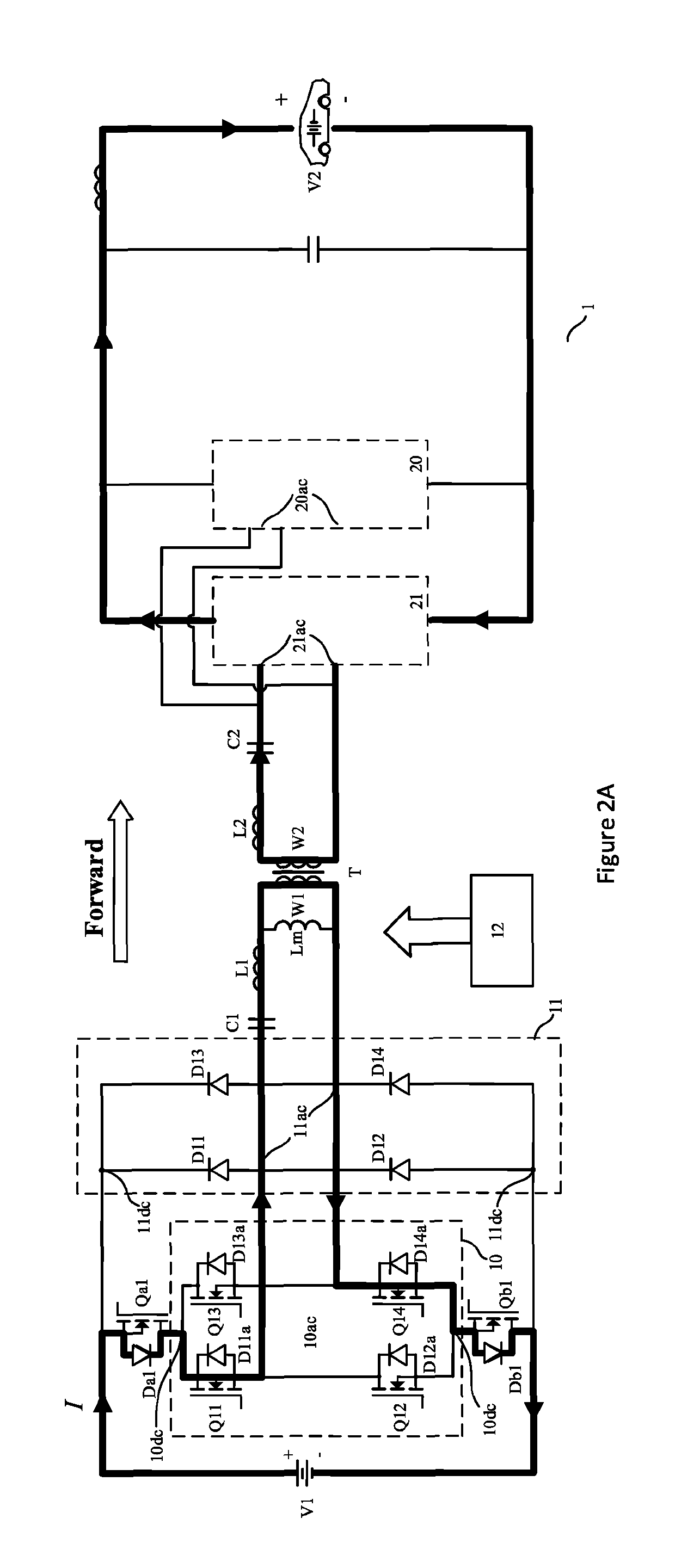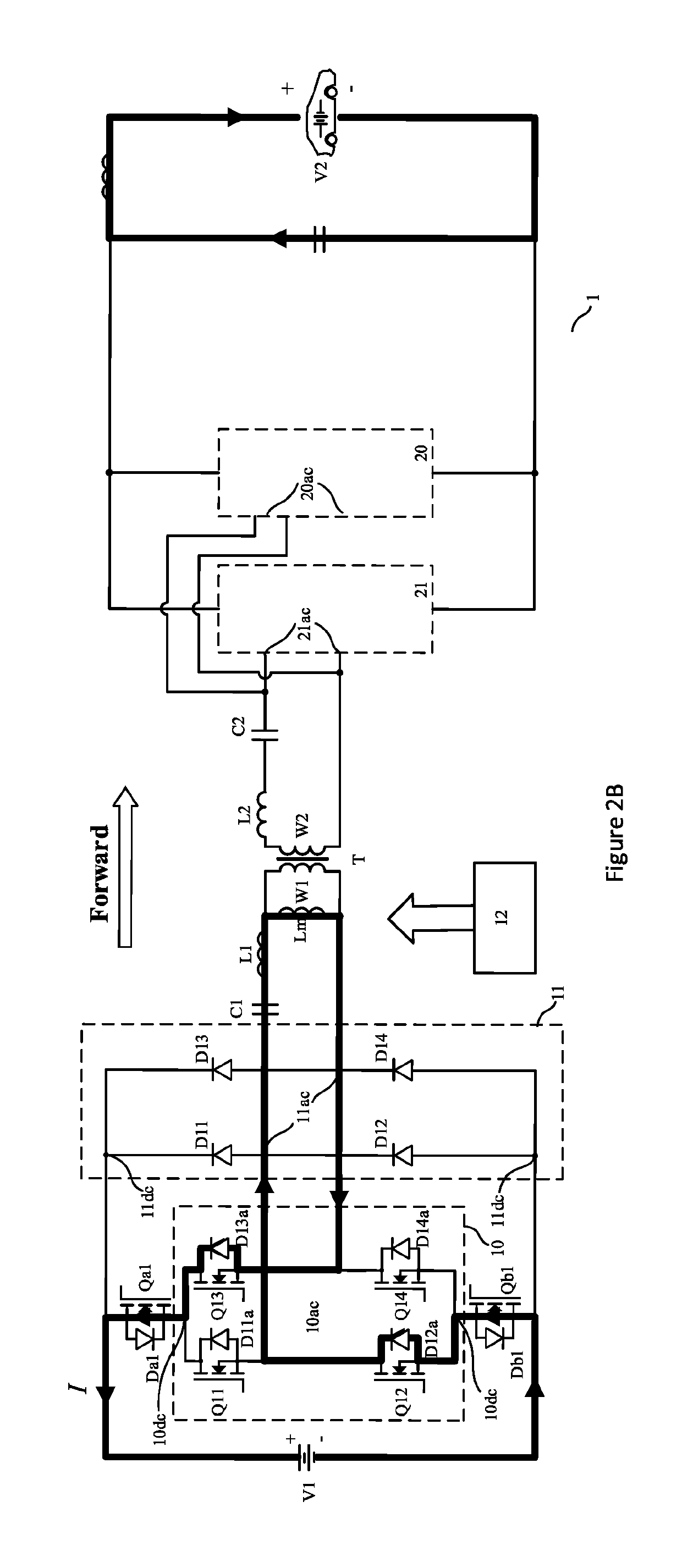Bidirectional DC-DC converter and control method therefor
a dc-dc converter and bi-directional technology, applied in the direction of electric variable regulation, process and machine control, instruments, etc., can solve the problems of slow reverser recovery characteristics of the body diodes, reduce the soft-switching operation condition of the dc-dc converter, and reduce the rating voltage of the power switch of the dc-ac conversion circuit, reduce the number of power switches, and reduce the loss of the switch
- Summary
- Abstract
- Description
- Claims
- Application Information
AI Technical Summary
Benefits of technology
Problems solved by technology
Method used
Image
Examples
first embodiment
[0026]FIG. 1 is a schematic circuit diagram of a bidirectional DC-DC converter with intermediate conversion into AC power according to present invention. A first DC power supply V1 and a second DC power supply V2 can be electrically connected to the opposite ends of the bidirectional DC-DC converter 1 to transfer electric power between the first DC power supply V1 and the second DC power supply V2. For example, the first DC power supply V1 can be generated from power grid, photovoltaic battery, home power supply, on-board battery of a first EV, and the like, and the second DC power supply V2 can be provided by on-board battery of a second EV; as an alternative, the first DC power supply V1 can be generated from an on-board battery of a first EV and the second DC power supply V2 is powered by power grid, photovoltaic battery, home power supply, on-board battery of a second EV, and the like, as well. The skilled person should understand that electric power can thus flow in a forward d...
third embodiment
[0062]As described above, the bidirectional DC-DC converter according to the embodiment of present invention is specified with examples explaining circuit topology at the side of the first winding W1 and how the bidirectional transmission of DC power based on that. FIG. 5 is a schematic circuit diagram of a bidirectional DC-DC converter with intermediate conversion into AC power according to present invention. As shown in FIG. 5, the circuit topology at the side of the second winding W2 can be implemented according to that of conventional bidirectional DC-DC converter, for example a full-bridge using MOSFETs as described in the Wei Chen et al's paper, where when the forward transmission occurs, the resulting circuit configuration is equivalent to a uncontrolled AC-DC conversion circuit using body diodes of the MOSFETs, and when the backward transmission occurs, the resulting circuit configuration is equivalent to a controlled DC-AC conversion circuit. The DC-AC conversion circuit 20...
fourth embodiment
[0063]As an alternative, the circuit topology at the side of the second winding W2 can use the circuit configuration similar to that at the side of the first winding W1 according to an embodiment of present invention. FIG. 6 is a schematic circuit diagram of a bidirectional DC-DC converter with intermediate conversion into AC power according to present invention. As shown in FIG. 6, the DC-AC conversion circuit 20 can be designed in a circuit configuration similar to the DC-AC conversion circuit 10, including MOSFETs Q21, Q22, Q23, Q24 each having body diode D21a, D22a, D23a, D24a. The AC-DC conversion circuit 21 can be designed in a circuit configuration similar to the AC-DC conversion circuit 11, including power diodes D21, D22, D23, D24. Another pair of switches Qa2, Qb2 are arranged with respect to the DC-AC conversion circuit 20 and the AC-DC conversion circuit 21 in an electrical connection relationship symmetrical to that between the switch Qa1, Qb1 and the DC-AC conversion c...
PUM
 Login to View More
Login to View More Abstract
Description
Claims
Application Information
 Login to View More
Login to View More - R&D
- Intellectual Property
- Life Sciences
- Materials
- Tech Scout
- Unparalleled Data Quality
- Higher Quality Content
- 60% Fewer Hallucinations
Browse by: Latest US Patents, China's latest patents, Technical Efficacy Thesaurus, Application Domain, Technology Topic, Popular Technical Reports.
© 2025 PatSnap. All rights reserved.Legal|Privacy policy|Modern Slavery Act Transparency Statement|Sitemap|About US| Contact US: help@patsnap.com



